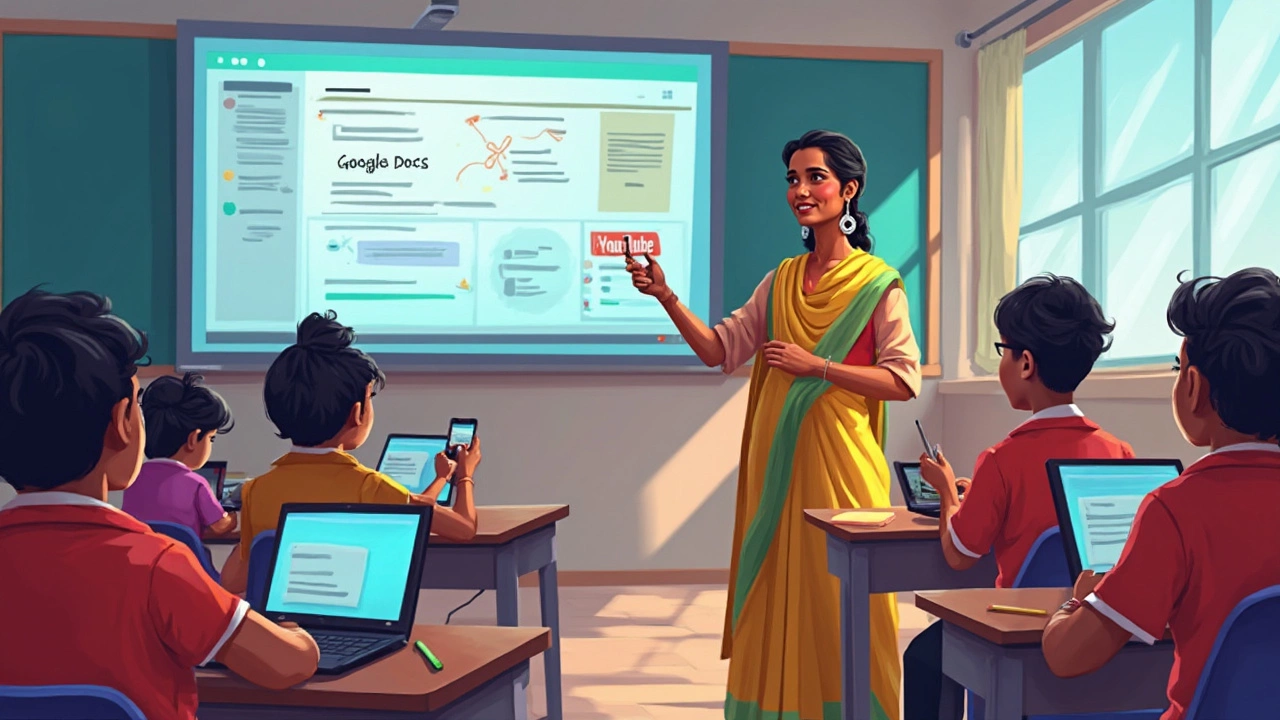Google in Indian Schools: What’s Changing and Why It Matters
For years, Google apps like Classroom, Drive, and Meet have been the go‑to digital toolbox for teachers across India. They’re cheap, easy to set up, and most students already know how to use them. But a growing number of schools are now pulling back. Privacy worries, data‑ownership debates, and the rise of home‑grown platforms are driving this shift.
Why Schools Are Moving Away from Google
First up, data security. Parents and administrators are becoming more aware of how student information is stored and who can see it. When a school signs up for a free Google account, they often hand over a lot of control to a US‑based company. That makes compliance with India’s new data‑protection rules tricky.
Second, the need for customised features. Google’s one‑size‑fits‑all approach works for many classrooms, but it falls short when schools want local language support, region‑specific assessment tools, or integration with government portals. Local ed‑tech startups can tailor their platforms to these needs, offering a smoother experience for teachers and students alike.
What Alternatives Are Gaining Traction
Platforms such as Edutor, Teachmint, and Byju’s Classroom are gaining steam. They promise tighter data control, Indian language interfaces, and built‑in analytics that align with national curriculum standards. Many of them also bundle video lessons, live quizzes, and AI‑driven feedback, which Google Classroom doesn’t provide out of the box.
Another trend is the rise of open‑source LMS solutions like Moodle, which can be hosted on a school’s own servers. This gives complete ownership of data and the flexibility to add custom plugins for everything from attendance tracking to parental portals.
If a school isn’t ready to jump fully to a new system, a hybrid approach works too. Some keep Google Drive for storage while moving assignments and grading to a local LMS. This reduces disruption and lets teachers test the waters before a full migration.
When choosing a replacement, look for three key things: data residency (where the servers are located), language support, and integration with existing school management software. A trial period of a few weeks can reveal whether teachers find the new interface intuitive and whether students can access resources without a hitch.
From a teacher’s perspective, the biggest hurdle is habit. Switching platforms means re‑learning how to post assignments, give feedback, and communicate with parents. Schools that plan regular training sessions and provide quick‑reference guides see smoother transitions. Peer‑to‑peer support groups also help; teachers love swapping tips on shortcuts and hidden features.
Students benefit most when the new system mirrors the way they already use smartphones and tablets. Features like push notifications, offline access, and simple navigation keep them engaged. If a platform can sync with popular apps like WhatsApp for quick updates, that’s a bonus.
In short, the move away from Google isn’t about ditching technology—it’s about finding tools that fit India’s specific educational landscape. Whether you opt for a local commercial LMS, an open‑source solution, or a blend of both, the goal stays the same: give teachers the freedom to teach and students the resources to learn without worrying about data privacy.
Is Google an E-Learning Platform? The Facts Everyone Gets Wrong
People often wonder if Google counts as an e-learning platform, especially after the rise of Google Classroom and all its online tools. This article breaks down what makes something an actual e-learning platform and dives into how Google fits into the big picture. You'll see where Google shines, where it falls short, and what this means for teachers, students, or anyone learning online. Get ready for some practical tips on using Google for your own learning. You'll never look at Google Docs or YouTube the same way again.
read moreIs Google a Digital Platform in E-Learning?
Exploring whether Google qualifies as a digital platform in the e-learning sphere isn't as straightforward as it seems. While it’s best known as a search engine, Google offers a slew of tools like Classroom and Drive, vital for online education. These tools enable collaboration and resource sharing, transforming traditional schooling approaches. With the rise of digital learning, understanding Google's role in this space is crucial for educators and students alike.
read more
